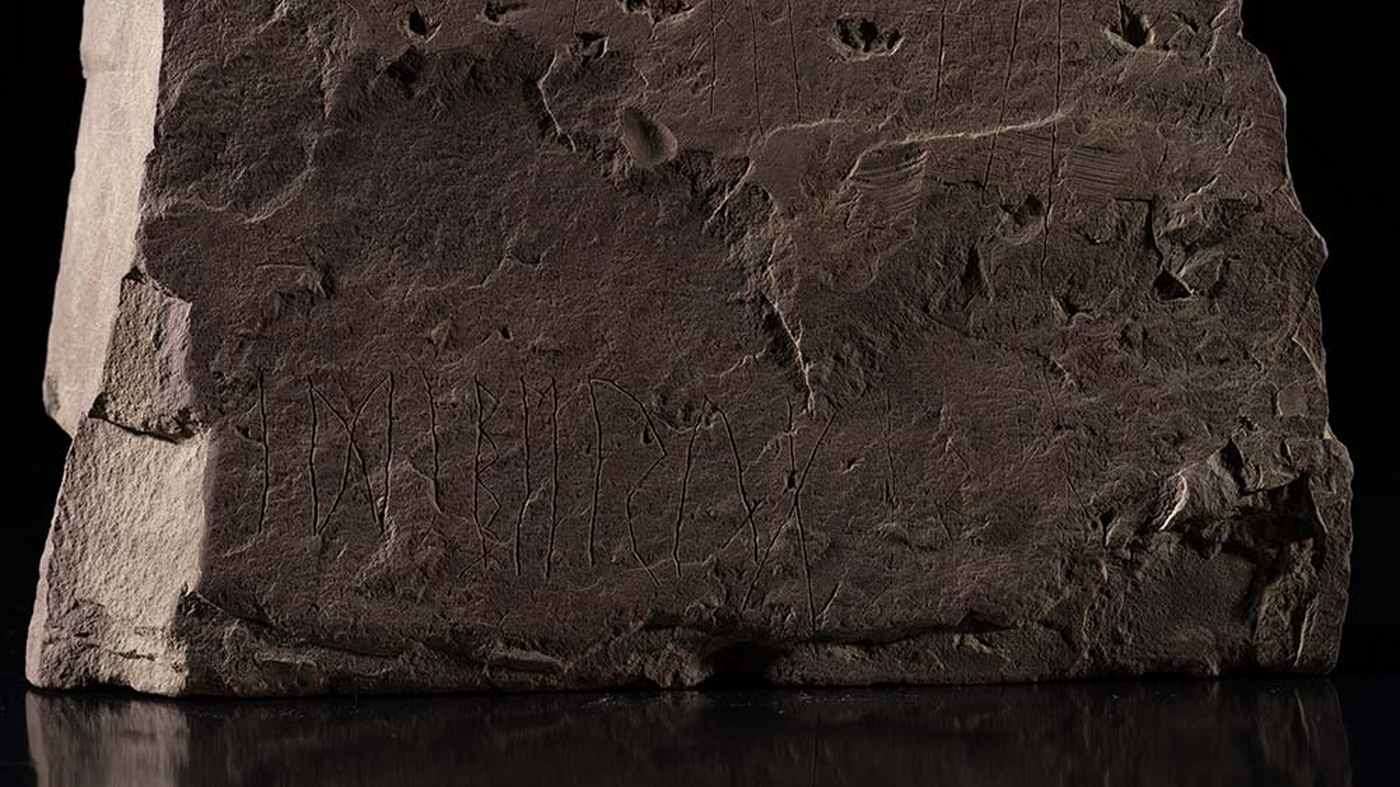Rare 170-Year-Old Cree Jacket Turns Up at Vintage Shop in UK-and They Want to Reunite It With Its Community
The brown fringe jacket arrived at the Glass Onion vintage warehouse in Barnsley, South Yorkshire arriving on a clothing pallet from the US.

A runestone was discovered in Norway recently that jumps back the origin date of runic writing by hundreds of years to a time before the fall of Rome.
Based on carbon-dated organic remains, the reddish-brown sandstone block may have been carved as far back as 250 to 1 CE-making it the oldest ever found.
Most runestones are named based on the location they were discovered, and this one is called the "Svingerudsteinen," or "the Svingerud Stone."
It was found in 2021 during the excavation of a cremation pit in the Tyrifjorden of Norway which has been the zip code of some truly monumental Viking Age discoveries, such as the Gjermundbu helmet.
Found alongside charred bones and charcoal, it may have been coupled with a funerary tradition.
"Having such a runic find fall into our lap is a unique experience and the dream of all runologists. For me, this is a highlight, because it is a unique find that differs from other preserved rune stones," says runologist Kristel Zilmer, Professor of Written Culture and Iconography at the Museum of Cultural History, University of Oslo.
Inspired by the classical alphabets through contact with the Romans, the Germanic peoples created their own characters-runes. But exactly how old is the runic alphabet, and when were the first rune stones made are questions that researchers have been seeking to answer for many years.
The runic language, technically called "futhark"-a name formed out of the first characters in the alphabet, was widely distributed across Scandaniva from the period following the end of the Roman empire in the West, around the 440s CE, and the Viking Age, traditionally-dated from 793 to 1,066 CE.
Hundreds of runestones-tall monoliths with memorials carved in intricate patterns-have been found across Scandinavia, most of which use the "younger futhark" runic script, and nearly all bearing a memorial epitaph.
For example, the face of Runestone U 991, carved in the Urness Style between 1,045 and 1,075 CE, bears the runes: í á¦áá á´á¾ í [á ](á¢)á´ í á´á¢á¾á á± í á±á áááᢠí ááá áá¾á + á á ááᦠí á¢á á¦á± í áá±á¢á¦á¢á± + ááá¾ + -which mean "Thegn and Gunnarr raised the stones in memory of Veí°r, their brother."
Runestone U 171 reads: "Gunni had this stone cut in memory of Eyndr, his good son, and in memory of himself. Fasti carved the runes."
This pattern of epitaph is almost ubiquitous. But these Urness-style stones are about 1,000 years old, so it's by no means obvious that the inscription on the Svingerud Stone follows the same pattern.
The one thing which the modern runemaster Zilmer knows for sure is that the inscription bears some kind of name: Idiberug.
The ways of writing older inscriptions varied considerably and the language changed a lot between the time when these runes were carved and the epoch of the Viking Age. Interpreting the messages on the stone is therefore a challenge, the University of Oslo which currently has the stone at their museum, wrote in a statement.
"The text may refer to a woman called Idibera and the inscription could mean "For Idibera," says Professor Zilmer.
"Other possibilities are that Idiberug is the rendering of a name such as Idibergu, or perhaps the kin name Idiberung. And there are other possible interpretations-as common with early runic inscriptions."
Runologists like Zilmer don't have a large body of reference, as only 30 or so stones have been found with inscriptions dating from the 6th century or earlier.
SHARE This Amazing Discovery With Your Friends On Social Media…
Be the first to comment